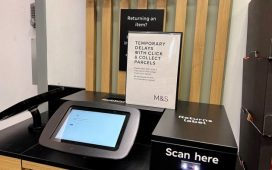High interest rates and frozen allowances are set to land millions more people with an unexpected tax bill on their savings.
Up to 5.5 million accounts earned more than £1,000 in savings interest in November 2023, compared to 1.6 million accounts the year before – surpassing the Personal Savings Allowance threshold.
The research by Paragon, based on the latest available CACI data, found this reflected a staggering 246 percent rise in accounts that will need to pay tax.
Andy Wood, tax expert at Tax Natives said: “As rates go up, savers need to be mindful of their Personal Savings Allowance (PSA).
“More people are at risk of surpassing their PSA limits of £12,570 and unintentionally facing unnecessary taxes on their savings interest.
“This is generally the basic income tax rate of 20 percent, and a fifth of your savings going back to the tax man is not what you want.”
He continued: “Breaching your PSA can lead to unintended tax payments on your hard-earned savings. With nearly a third of savers breaking their PSA for the first time in 2023, it’s clear that many are not fully aware of the potential financial consequences.”
How to avoid the tax risk
To avoid the risk of paying tax on savings, Mr Wood said many people are turning to tax-efficient strategies like ISAs.
He explained: “Transferring non-ISA savings into Individual Savings Accounts (ISAs) has become a popular approach, with 40 percent opening new cash ISAs to safeguard their savings from taxation.
“Maximising your annual £20,000 ISA allowance is a smart way to stay within the tax-free limits.”
People can save up to £20,000 tax-free in ISA accounts, and people can split this allowance across the different ISA investment types.
Mr Wood said: “Even in periods of low interest rates, ISAs remain valuable tools for safeguarding financial well-being.
“As interest rates continue to rise, ISAs become essential for those looking to ‘pay away’ interest on longer-term bonds, ensuring tax-free benefits even in dynamic economic conditions.”
To get the most out of their savings, Mr Wood suggested people “regularly track” their total savings interest to stay on top of how close they are to the PSA limit.
He said: “This will let you make more proactive adjustments like shifting money to lower-interest accounts.”
He added that people can also double their PSA with their partner if they have one. He said: “The PSA applies only to individual taxpayers, so married couples and civil partners can combine theirs to effectively double the tax-free allowance they can enjoy.”










